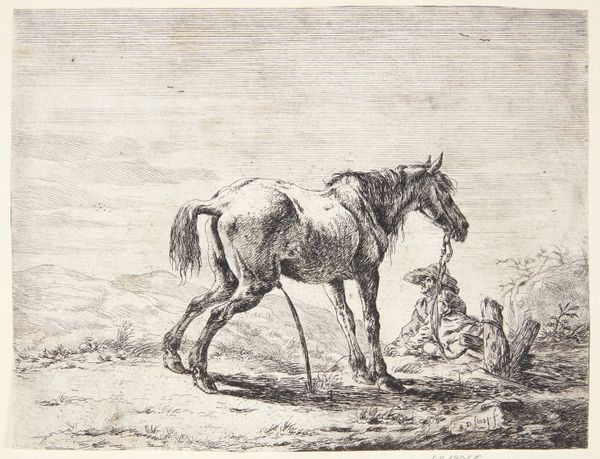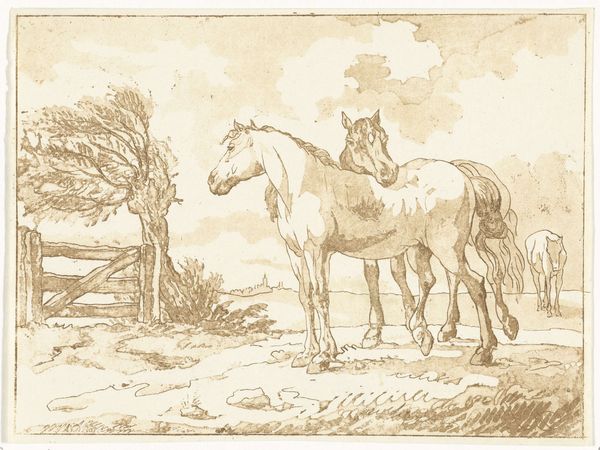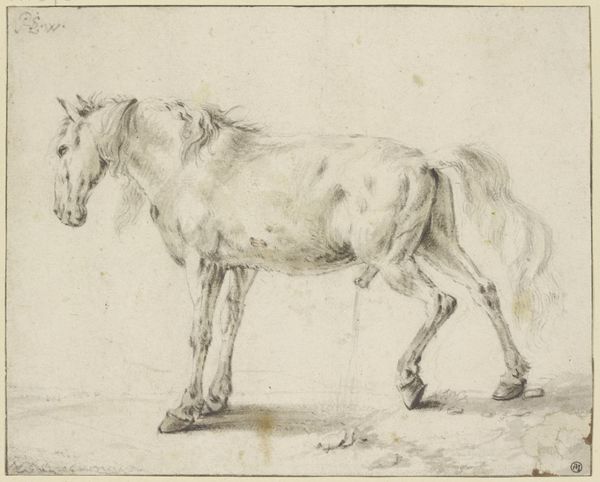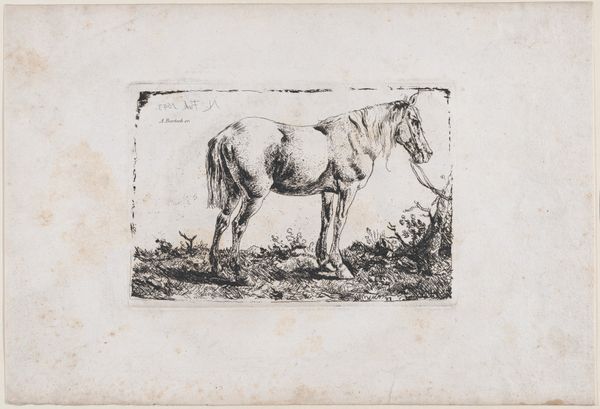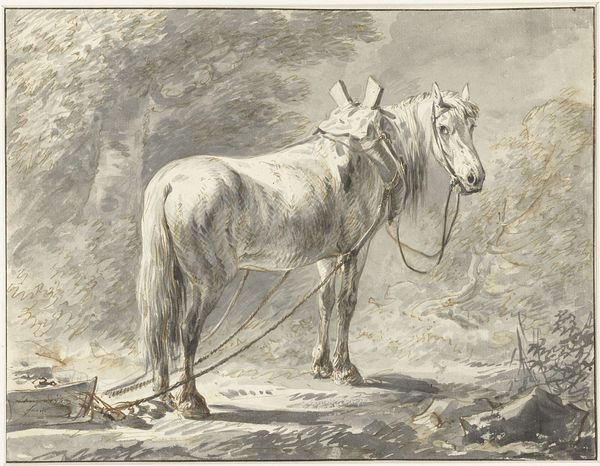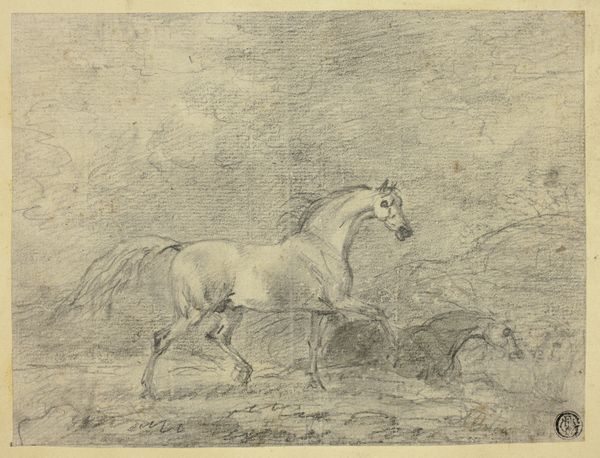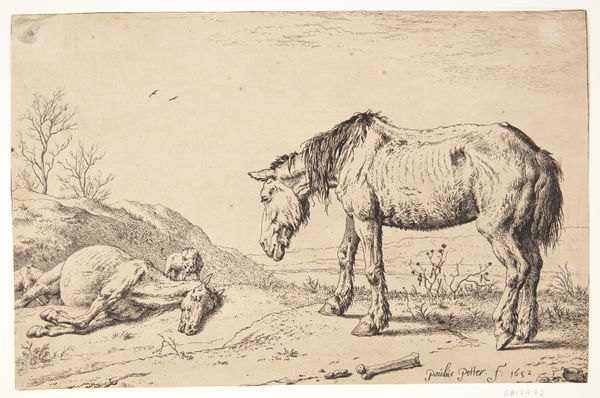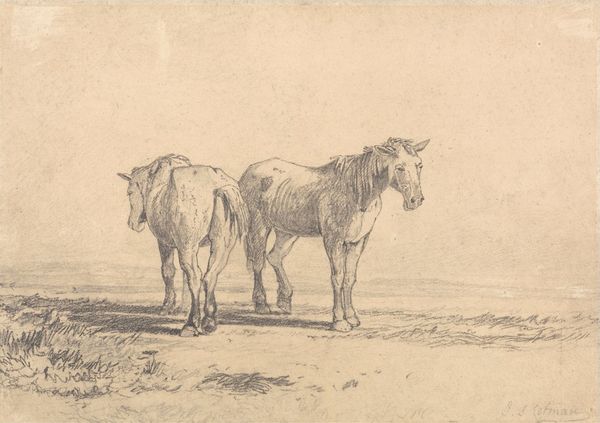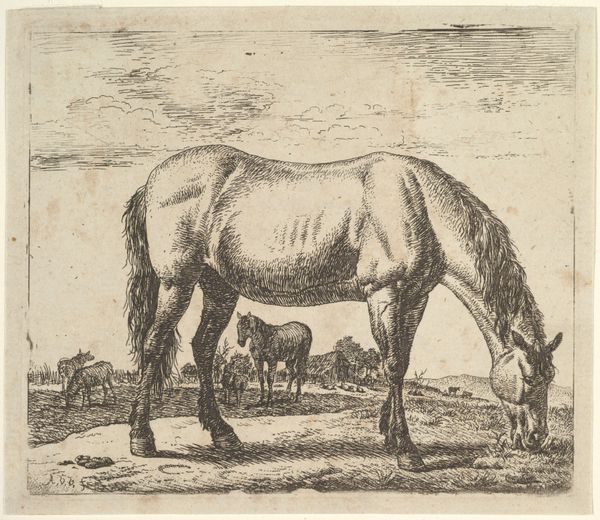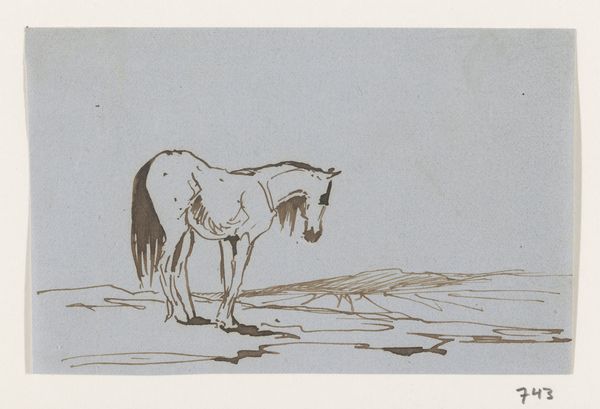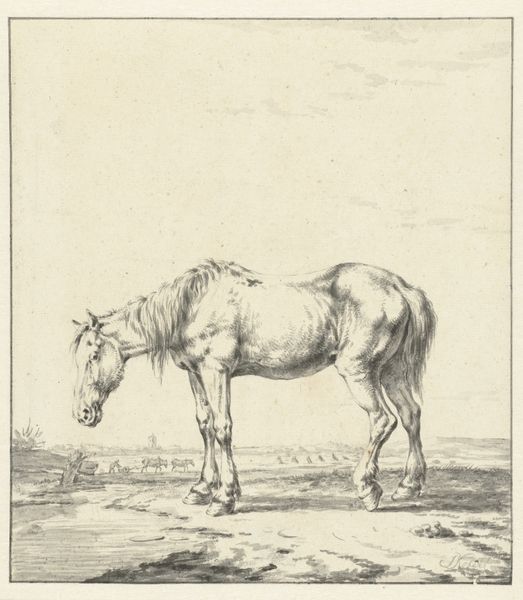
drawing, paper, watercolor, ink, graphite, pen
#
drawing
#
animal
#
landscape
#
figuration
#
paper
#
watercolor
#
ink
#
sketch
#
graphite
#
pen
#
watercolour illustration
#
sketchbook art
Dimensions: 191 × 225 mm
Copyright: Public Domain
Editor: Here we have a work titled "Standing Horse with Head Turned," of an unknown date by Sawrey Gilpin, rendered in ink, watercolor, and graphite on paper. It strikes me as a very informal, almost like a preparatory sketch. How would you interpret this work in terms of its historical and social context? Curator: Well, this kind of image taps into the socio-political undercurrents of 18th-century Britain. Gilpin was known for his paintings of animals, especially horses, often commissioned by wealthy landowners. What purpose do you think depictions of animals served within that context? Editor: Hmm, perhaps a symbol of status and power? Horses were valuable assets. Curator: Exactly. Equestrian portraits and depictions of prize-winning animals became visual markers of wealth and aristocratic identity. But, this sketch, less formal, seems to engage a growing market for animal drawings outside the elite circles, catering to scientific curiosity, and also fueling sentimentality toward animals in a changing social landscape. How might the use of watercolor and ink, compared to oil paint, change its accessibility to the public? Editor: Watercolor seems more immediate, less... lofty? Making art feel less intimidating. Curator: Precisely. Gilpin created these types of studies to reproduce into inexpensive prints that spread awareness, even reverence for nature. Also, this growing sentiment of awareness changed not just public perception of certain animals, like horses, but influenced how they are depicted in other visual medias of the time. Do you see that sentiment reflected here? Editor: Yes, I see what you mean. This image now seems less about pure status and more about appreciating the animal itself. I hadn't considered the socio-political aspects shaping even a simple horse drawing. Curator: And that is precisely what art can reflect about public perception.
Comments
No comments
Be the first to comment and join the conversation on the ultimate creative platform.
